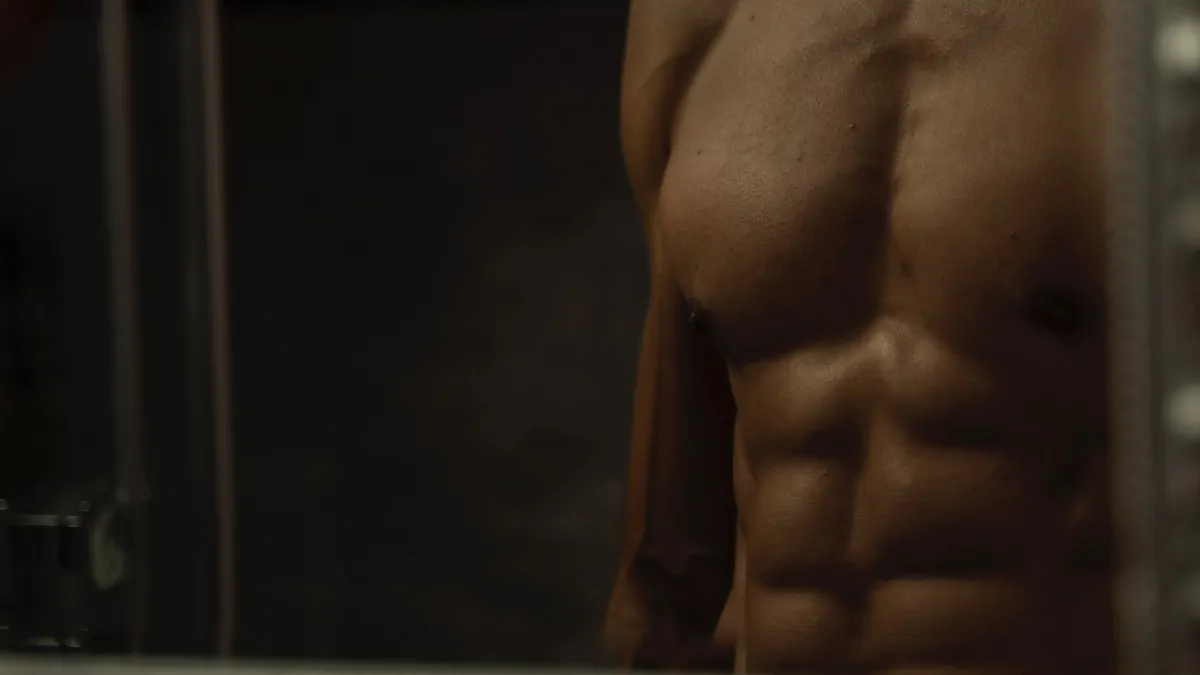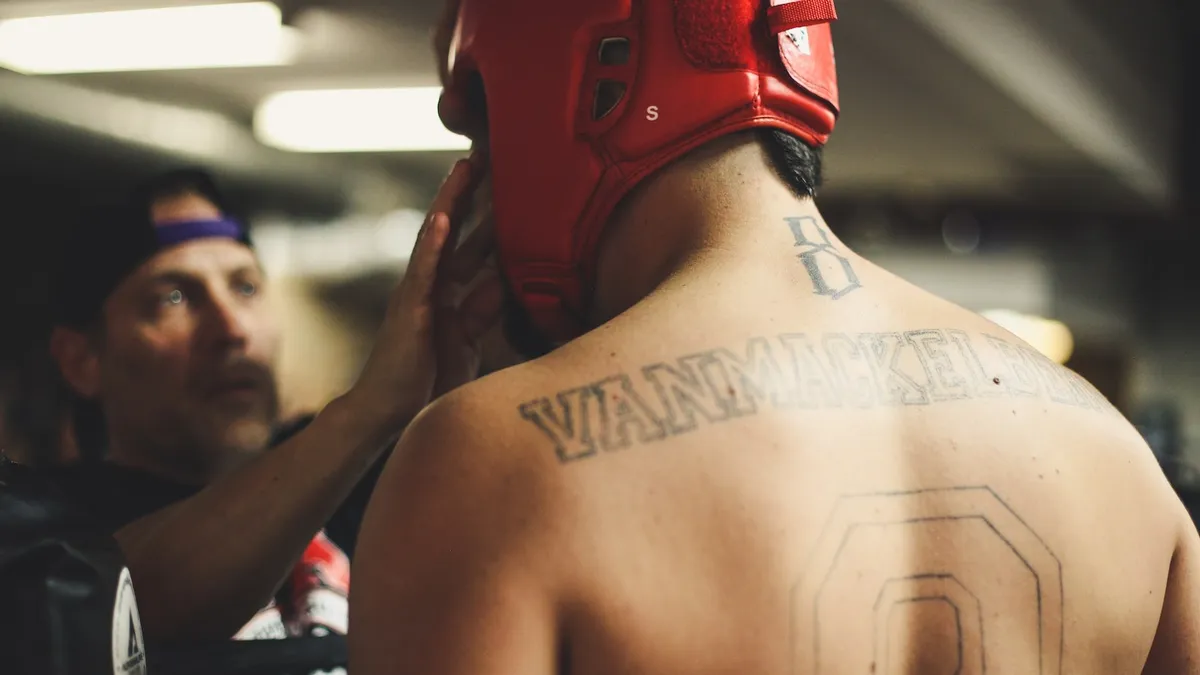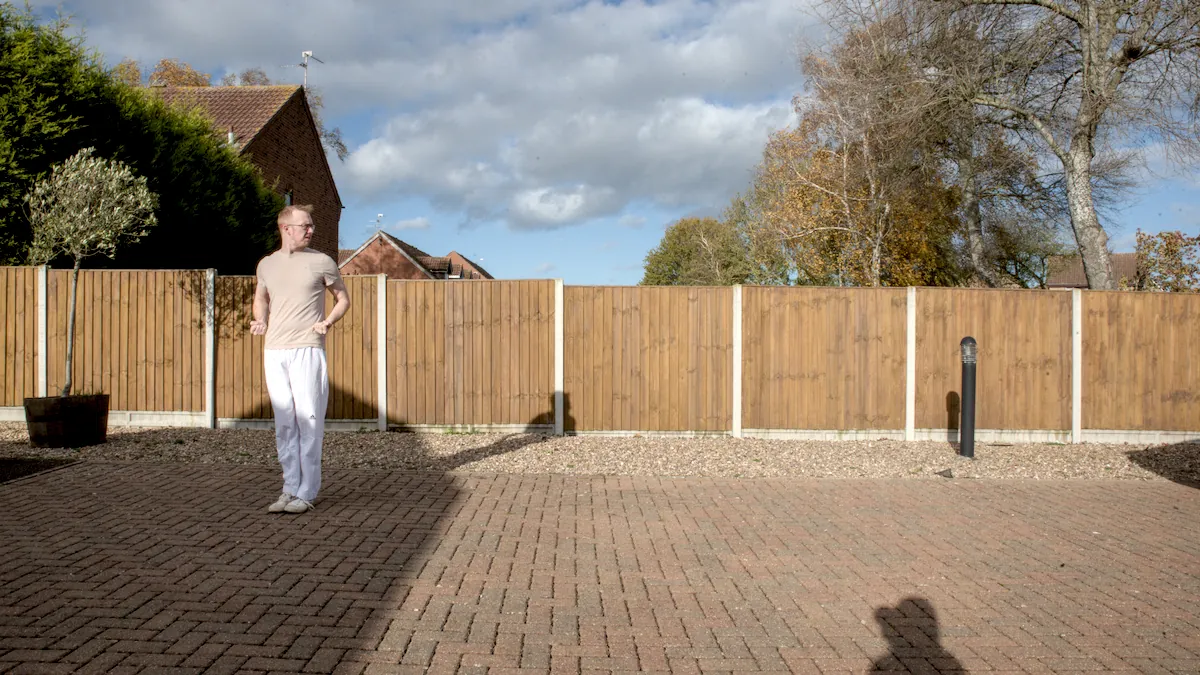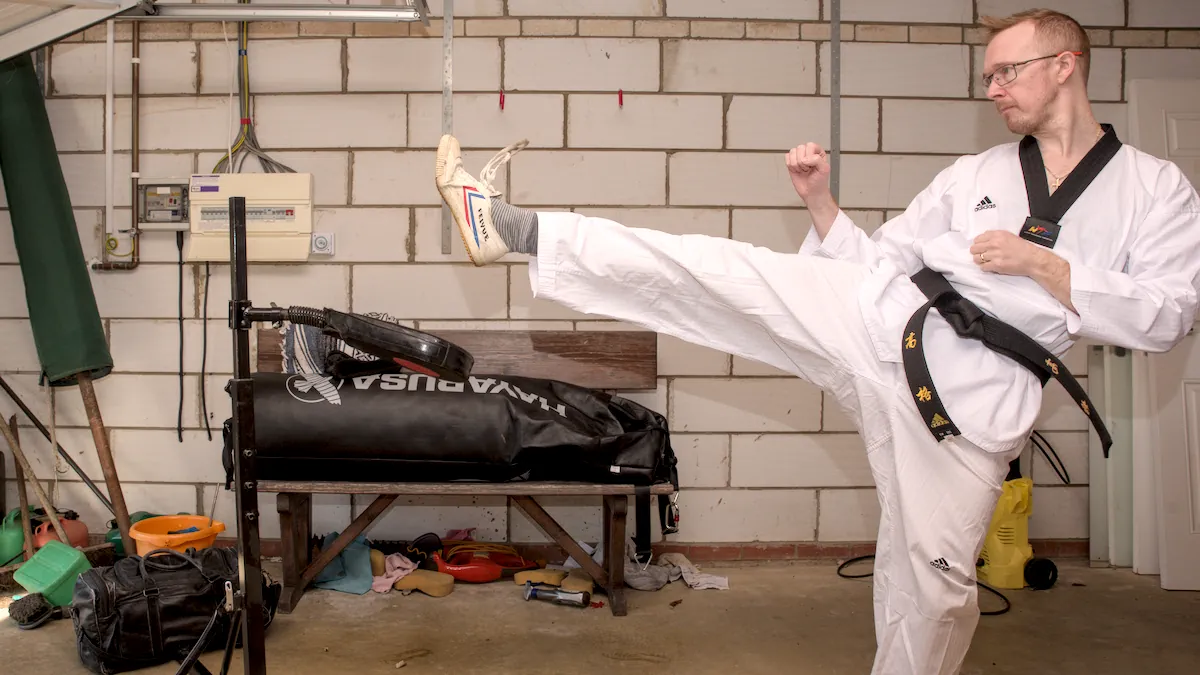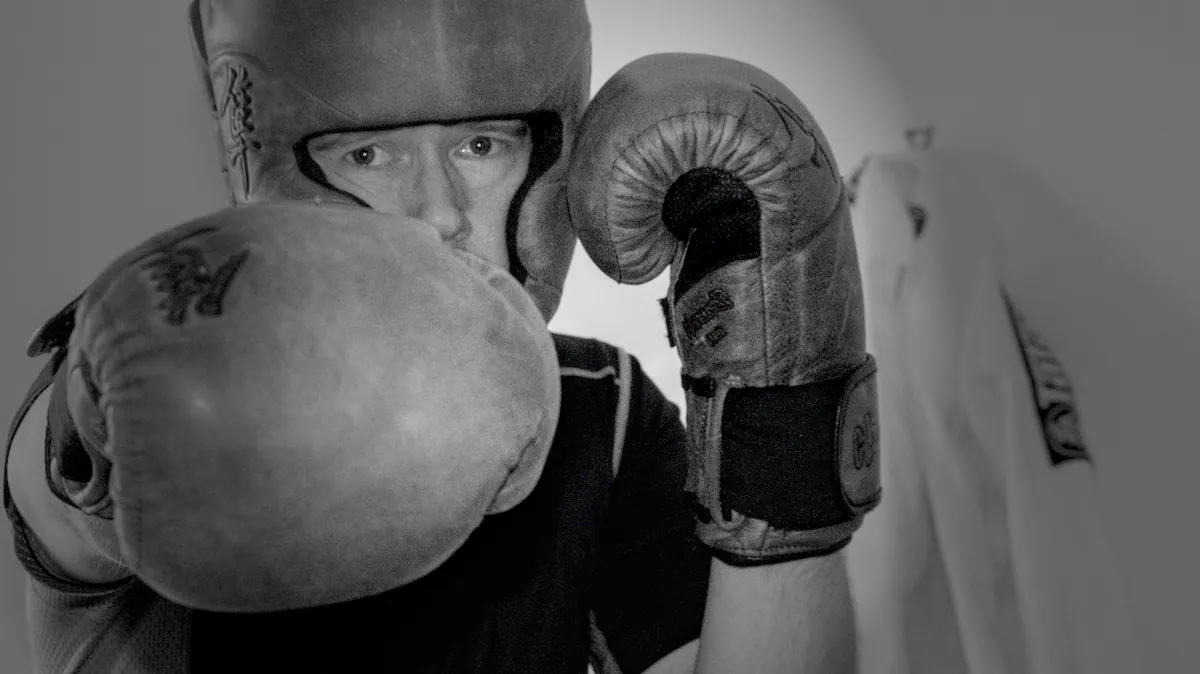Learning how to fight is a skill every man needs, I’ve been training for over 30 years. Unfortunately, it’s also one he will need to use sooner or later. Being prepared when the occasion arrives will be the difference between walking away victorious and not walking away at all. Find all the basics of how to fight here, the perfect foundation if you want to learn a martial art or just want to know how to defend yourself.
Finding a dojo and mastering a martial art will take years of dedication and practice, but you can perfect these skills quickly and increase your chances in a streetfight.
A 2019 study analysing over 200 videos of streetfights and found that “The average length of all fights was forty seven seconds.” And over 30% of fights ended with one fighter incompasited or knocked out within 30 seconds.
With that knowledge under your belt, these 8 skills will ensure you’re still standing when 47 seconds is up.
Skill 1: Your Fighting Stance
Your stance is your foundation. How you stand will determine whether or not his fist reaches your face and if your punches will hit the target.
Sure, everyone wants to focus on throwing knock-out punches, chokes, and other finishing moves, but you may not get the chance if your stance sucks. Let me break it down.
Everyone without training will drop their hands down by their waste and only pick them up when they want to punch or avoid an incoming blow. But the first skill boxers learn is to keep their hands up for the entire fight. Why?
Imagine standing opposite an opponent with your hands by your waist; how far is it to his face? Now put your hands up in front of your chin; how far is it now?
Simply by keeping your hands up, you cut the distance your fist must travel in half when you throw a punch. This means your opponent has half the time to react, and you expend half the energy (so you throw more punches before gassing out.)
The second reason to keep your hands up is to block or deflect your opponent’s strikes. When someone throws a punch at you, the first thing you’ll do is bring your hands up as you try to move away. So why not keep your hands there? With your hands already up by your face, you only need to make a tiny adjustment to protect yourself from his attack.
The other important aspect of your fighting stance is your foot placement. If you want to get deep into the details of this, check out my in-depth article on fighting stances; here’s the TLDR:
- Stand with one foot forward
- Don’t stand square on
- Don’t have a stance that’s too narrow or too wide
So standing at a 45-degree angle to your attacker with your hands up is enough to give you a strong advantage in a street fight against an untrained attacker.
Skill 2: Move! Don’t Stand Still
When someone stops moving in the ring, we call it target practice. Hitting a heavy bag or a standing target is so easy because it doesn’t move. Never give that advantage to your opponent. Just by moving around, you will be harder to hit and will find opportunities to escape or strike back.
How should you move?
Avoid moving straight backward; it’s the worst way to retreat in a fight, although it is your natural instinct. You want to get out of there and get away from the strikes, but if you move backward, he can move forward. We know who wins that race. Throwing punches is also much easier when you’re moving forward, as you get the advantage of momentum. That also means that your punches will be less powerful too.
So, sideways is better. I’m not saying you should try jumping sideways to avoid an incoming punch; I’m saying you should constantly take side steps throughout the whole fight, forcing the attacker to continually turn to face you.
Which way should you step?
Away from their power hand, which is usually their right (right-handers make up 90% of the population), you should sidestep to your right to avoid it.
Skill 3: Fight How Your Body Type Should Fight
If you’re a short fat guy, you must fight differently than a skinny tall guy; it’s that simple. Knowing your body type and how it should fight will make things much easier.
Tall Guys
If you’re tall, have long arms and a good reach, your goal in a fight is to stay on “the outside.” To do that you just need to maintain more distance between you and the person your fighting. The primary way of maintaining distance is to kepp moving.
If he moves forward, you take a step back, keep that long range distance where you can hit him but he can’t reach you.
Short Guys
Shorter fighters need to get closer to land blows. But how do you do that without getting knocked out on the way in?
You often see shorter fighters pressuring their opponents, constantly walking forwards, forcing them to be on the back foot. Often that means taking punches to land your own.
A better strategy for a less experieenced fighter is to stay out of range, then rush in when an opening presents itself. The quick rush will be a surprise and force whoever you’re fighting to start covering up. After landing a punch or two, create space again.
Skill 4: Learn to Throw a Proper Punch
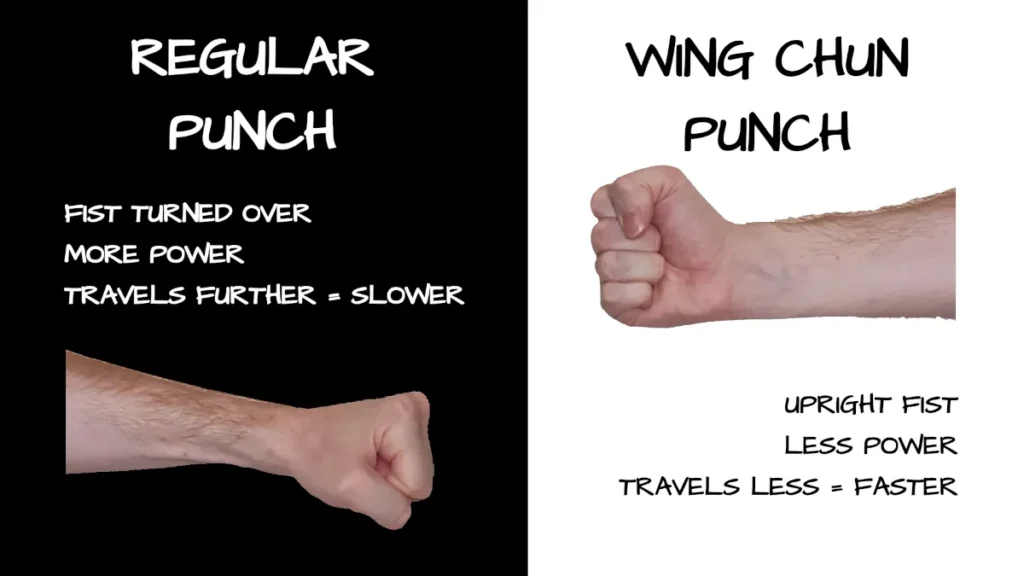
Thumbs go outside the fist!
For most fights, the primary weapon you’ll see used is the punch. Every man, deep down, thinks he has a devastating right hand if he could only land it cleanly, but I don’t recommend you indulge in this fantasy. If you’ve never trained and aren’t 200 lbs of solid muscle, your punches are weak and won’t do much.
There are tons of punching techniques and lots of detail to go into, but let’s keep it simple. Learn these two punches, and you’ll be effective in self-defense.
- Jab
- Cross
There’s a reason these punches are called two; they are the first punches you should learn. But they don’t come naturally.
If you’ve ever seen two guys brawling, you’ll have seen wild arcing punches that swing from the hip to the side of the face. There are serious problems with this type of punch, whether you land it or not.
- Your finger makes contact first, so you’re much more likely to break your hand
- It’s a slow punch that can be avoided easily
- If you miss, you’ll be left wide open and off balance
Compare this to throwing a straight cross.
- Your knuckles make contact first
- The punch (if you have your hands up) is short and difficult to see coming
- If you miss, your whole arm is between you and your opponent, and resetting is quick
OK, I hope I’ve convinced you, practice using these two punches, and you’ll have all the skills you need.
Jab
Your jab is the front-hand punch. If you’re standing with one foot in front (as you should be), that side’s hand will be forward (you do have them up, right?)
Avoid the temptation to put everything into your jabs; that’s not what they are for. Your jab is a defensive punch.
When a fight begins, and you start moving around in your fighting stance, the thing that will make your opponent think twice about moving toward you is your jab.
Pump it out there; even when he’s too far to hit, it says, “Stay back or get hit.” Think of it like a dog snapping his teeth; it shows what’s in store for you.
When you do get in range, don’t stop throwing that jab; now it can land! Your opponent will have to spend most of his energy trying to avoid getting hit by it. When he’s defending, he’s not attacking.
Even though it’s not a power punch, no one wants to get jabbed in the face!
When your jab finally lands, it’s time to throw the big punch, your cross.
Cross
If you’re throwing straight punches and your opponent throws wild punches, you’ll hit first every time.
But you don’t want to throw this strike until you can land it. So use your jab to figure out if you are close enough, and as soon as you feel it lands, shoot out a straight cross.
- Squeeze your fist
- Turn your hand over (palm down)
- Turn the waist for more power
Skill 5: Kick & Flips: Leave Them to Trained Martial Artists
Kicks look cool, and they have devastating effects. However, I’d leave the kicks on the soccer field unless you know what you’re doing.
I started learning full-contact taekwondo at six years old, so kicks are second nature to me, but in a street fight, I would still be wary about throwing them.
The result of a poorly timed kick could mean ending up on the floor, which you should avoid at all costs. In the street, you don’t know who else might join in, especially when you become an easy target.
So stay on your feet, and keep your feet on the floor, and if you want to learn how to kick, find a decent kickboxing gym or a Taekwondo school.
Skill 6: Grappling and Close Contact Ground Fighting
You see it in boxing and MMA all the time, the two fighters lean into each other, and the crowd starts to boo. Are they just taking a rest? Sometimes, yes. But grabbing hold of your opponent has another benefit; you’re too close to hit.
By holding someone, there’s not enough space to throw a punch. If your opponent seems like a better boxer than you, grabbing hold of him and turning it into a wrestling match might be a good idea, especially if you are bigger or stronger than him.
Is this going to win you the fight? Probably not. But it will stop you from getting hurt (if it’s one-on-one) and could delay the fight long enough for other people to intervene.
Skill 7: Get Jacked to Look Like an MMA Fighter

All professional fighting organizations, whether it’s boxing, kickboxing, judo, karate, or the UFC, have weight categories. There’s a reason for that – the heavier you are, the more powerful you are. You know this instinctively.
At school, that one fat kid was probably the least athletic of all your classmates, but would 10-year-old you want to fight him? No, his immense size and weight just gave him too much of an advantage.
I’m not saying size is the be-all and end-all; a skilled fighter can beat a much bigger opponent. If you watched the early UFC, you’d know that using Brazilian jiu-jitsu, Royce Gracie defeated much bigger opponents (obviously on steroids) just using his skills and showcasing Gracie family BJJ to the world.
But if you’re reading this article, I guess you’re not a jiu-jitsu black belt.
When I attended my first jiu-jitsu class, the instructor paired me up with a blue belt woman for some “free sparring” for the last 15 minutes of class. I was a taekwondo black belt and had trained and fought in kickboxing competitions, but I didn’t have much experience on the ground.
Within seconds I had mounted her, and there was nothing she could do to get me off. It wasn’t because I was skilled; I had no skills; it was simply because my size and weight were worth more than her blue belt. If she was a brown or black belt, it may have been a different story.
I don’t recommend putting on pounds of fat to make yourself a better fighter. Instead, get a hypertrophy program that will help you gain size and strength, it will help all aspects of your fight game and make you look more masculine.
Skill 8: Get Stronger
There’s never a time when you will say, “I wish I was weaker.” There’s no downside to getting strong.
When it comes to fighting, getting strong will help every aspect of your skillset.
Speed is a function of strength.
If you get stronger, you’ll get faster. That means your punches will be faster, and you can move out of the way faster, getting you ever closer to that scene in the subway in The Matrix.
Here’s a simple way to get stronger than anyone can employ:
- Squat
- Deadlift
- Bench Press
- Press
Perform these four lifts for five sets of five reps to build strength fast. This is Mark Rippertoe’s Starting Strength formula. Get the book for the details.
Alternatively, you can spend your time in the gym training for power instead of strength.
To do this, use weights about 50% of your 1RM (one rep max) and concentrate on moving the weights as quickly as possible in powerful bursts. When you start to slow down, stop.
Take Martial Arts Classes & Learn More Fighting Techniques
This may seem obvious, but if you want to learn to fight, the best way is to actually learn to fight. Go find a Muay Thai gym or an MMA gym and learn the skills the way you should.
Here are a couple of articles that will help you decide:

